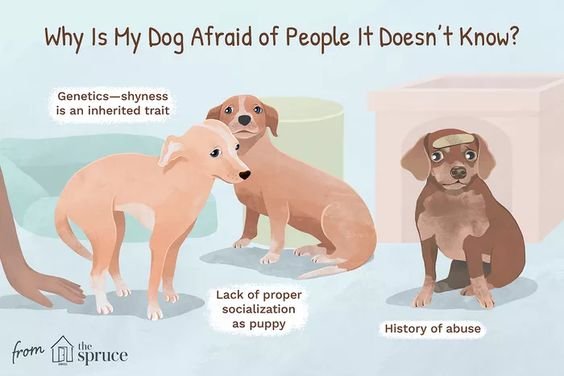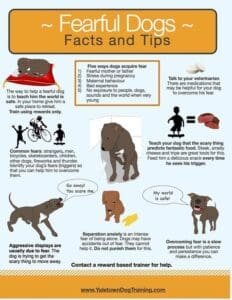Understanding canine fear phases allows dog owners to identify age-related fear periods and respond with appropriate training and support.
Understanding Canine Fear Phases
In this insightful article, we explore the fascinating world of canine fear phases and how they relate to navigating sensitive periods in a dog’s life. From puppies to adult dogs, understanding and recognizing these fear phases can greatly impact our interactions with our furry friends. Join us on this journey as we delve into the intricacies of canine behavior and provide practical tips on helping your canine companion navigate through these challenging times.
Canine Fear Phases
What are Fear Phases in Dogs?
Fear phases in dogs refer to specific developmental periods during which dogs may exhibit heightened fear responses to various stimuli. These fear phases are crucial in a dog’s development and can significantly impact their behaviour and emotional well-being. Understanding fear phases is essential for dog owners to effectively manage and support their dogs during these sensitive periods.
Understanding canine fear phases helps owners manage sudden changes in confidence and reactions during development.
The Importance of Understanding Fear Phases
Understanding fear phases in dogs is vital because it allows dog owners to recognize and address potential fear-related issues early on. By being aware of these sensitive periods, owners can take proactive measures to prevent the development of behavioural issues and aggression. Additionally, understanding fear phases enables owners to build trust and a strong bond with their dogs, creating a foundation of mutual understanding and support.
Common Signs of Fear in Dogs
There are several common signs that indicate a dog may be experiencing fear. Physically, a fearful dog may display trembling, panting, cowering, or excessive shedding. Behaviorally, a fearful dog may exhibit signs of aggression, such as growling or snapping, or engage in avoidance behaviors, such as hiding or running away. It is also important to consider environmental triggers that can induce fear in dogs, such as loud noises, unfamiliar people or animals, or negative experiences.
Puppy fear phases are a normal part of development and understanding them helps owners respond calmly and correctly.
Potential Triggers of Fear
Various factors can trigger fear in dogs. Loud noises and thunderstorms, for instance, can be particularly frightening for many dogs. Additionally, new environments and changes in routine can cause anxiety and fear in dogs. Interactions with unfamiliar people or animals can also elicit fear responses. Negative experiences, such as traumatic events or previous mistreatment, can profoundly impact a dog’s fear levels and behaviour.
With proper guidance, understanding canine fear phases can reduce long-term anxiety and improve behaviour.
The Three Fear Phases in Dogs
Dogs go through three distinct fear phases during their development: the neonatal period, the socialization period, and the juvenile period. Each phase plays a crucial role in shaping a dog’s fears, responses, and overall behaviour.
First Fear Phase: The Neonatal Period
The neonatal period occurs from birth to approximately two weeks of age. During this phase, puppies are highly dependent on their mother and littermates for survival. While some fear responses may be present, they are typically limited as puppies are focused on crucial developmental milestones. Proper socialization during this period, primarily through interactions with their mother and siblings, is crucial to lay the foundation for healthy fear management later in life.
Second Fear Phase: The Socialization Period
The socialization period begins around three weeks of age and continues until around twelve weeks of age. This phase is marked by rapid sensory and cognitive development. During the socialization period, puppies become more aware of their surroundings and are more susceptible to fear responses. Positive socialization experiences, exposure to various stimuli, and gentle introductions to new people and animals are essential in helping puppies navigate this phase and develop confidence.
Third Fear Phase: The Juvenile Period
The juvenile period typically starts around thirteen weeks of age and lasts until approximately twenty-four weeks of age. During this phase, fear responses become more pronounced and may be influenced by previous experiences and genetic predispositions. Dogs in the juvenile period may exhibit fear imprinting, where traumatic experiences or negative interactions can have a lasting impact on their behaviour. Striking a balance between confidence-building activities and caution is crucial during this phase to help dogs develop resilience and cope with fear-inducing situations.
Managing Fear during Different Phases
Managing fear during different fear phases requires a combination of patience, understanding, and appropriate training techniques. During the neonatal period, providing a secure and nurturing environment is crucial, allowing puppies to develop trust and confidence in their surroundings. The socialization period requires careful exposure to various stimuli, ensuring positive experiences that build confidence and reduce fear. In the juvenile period, it is important to continue socialization efforts while also working on behavior modification strategies to manage fear responses effectively.
Seeking Professional Help for Fear-related Issues
In some cases, fear-related issues may require professional intervention. Recognizing the need for professional help is important when fear responses become excessive or severely impact a dog’s quality of life. When seeking help, it is essential to choose a qualified dog behaviour specialist who has experience in dealing with fear-related issues. These professionals can provide guidance, develop behaviour modification plans, and offer support to both the dog and their owner throughout the process.
In conclusion, understanding and navigating through the fear phases in dogs is crucial for their overall well-being and development. By recognizing the signs of fear, identifying potential triggers, and properly managing fear during different phases, dog owners can create a safe and supportive environment for their furry companions. Seeking professional help when needed ensures that dogs receive the necessary guidance and support to overcome fear-related issues and lead happy, fulfilling lives.


